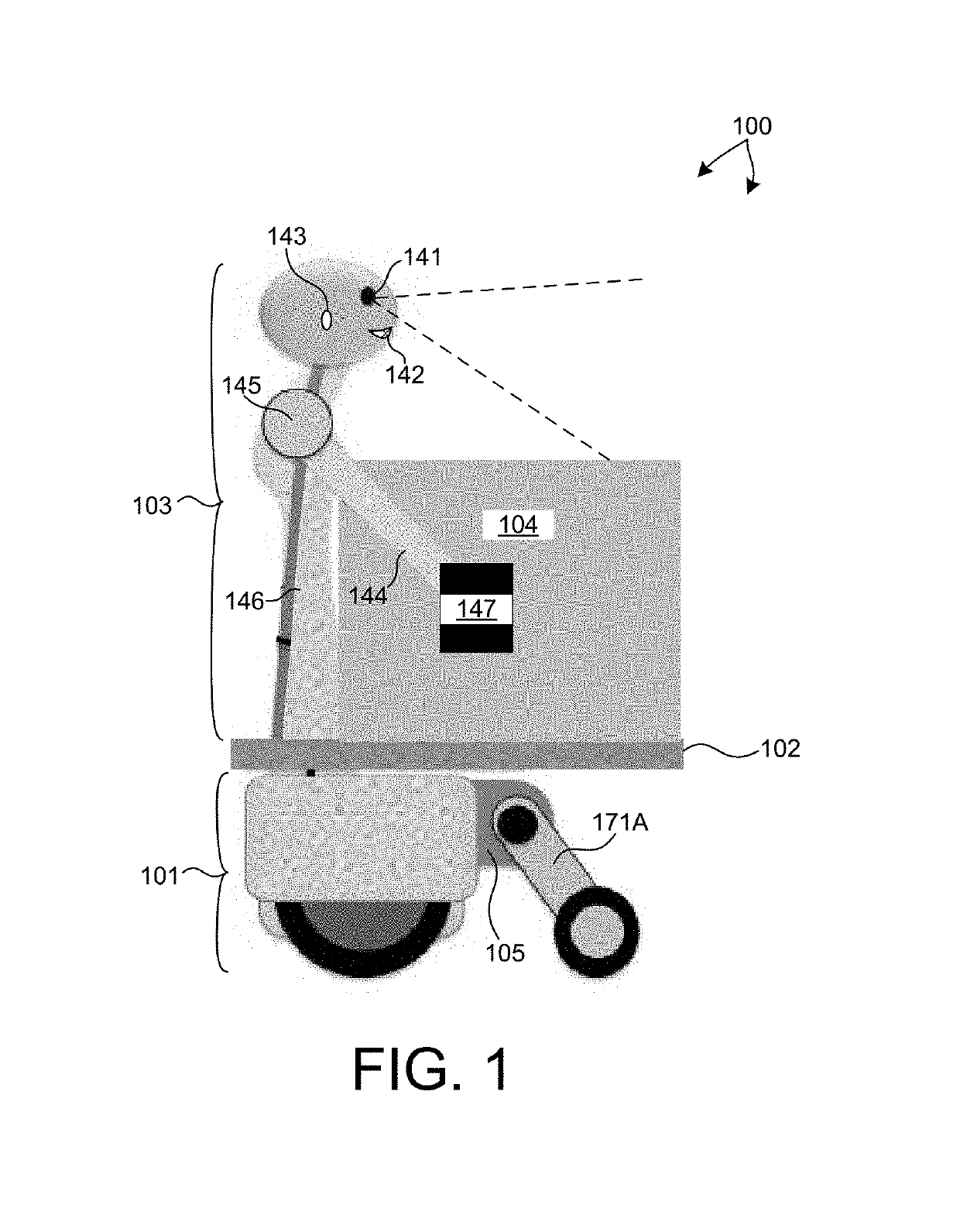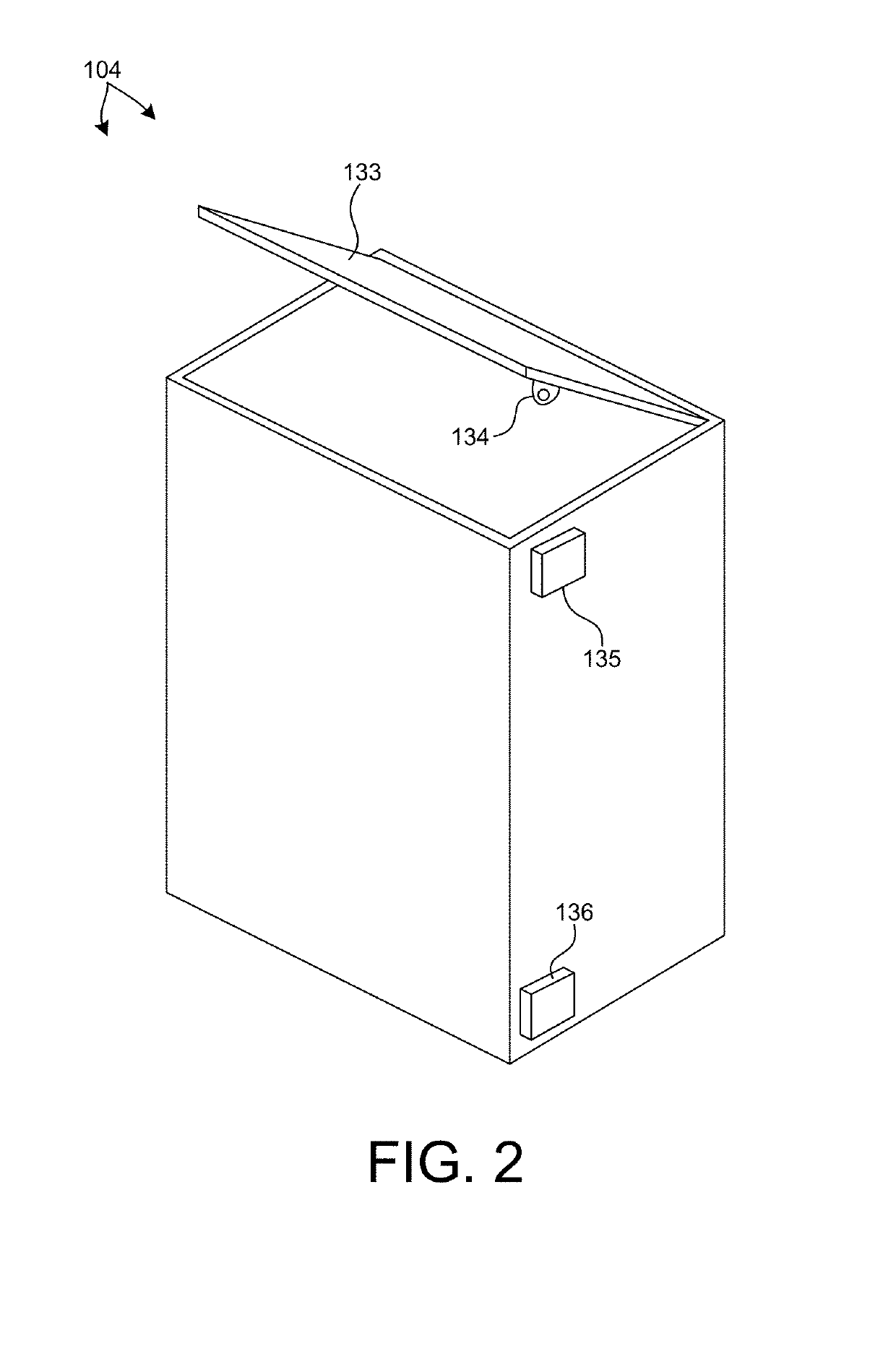Autonomous robotic vehicles for mobile storage and trash collection applications
a robotic vehicle and trash collection technology, applied in the direction of navigation instruments, instruments, refuse gathering, etc., can solve the problems of limited effectiveness of storage facilities, unstructured environment, and inability to effectively relieve the burden of transporting material items, so as to reduce the induced centrifugal force, maintain vehicle stability, and increase the speed
- Summary
- Abstract
- Description
- Claims
- Application Information
AI Technical Summary
Benefits of technology
Problems solved by technology
Method used
Image
Examples
Embodiment Construction
[0029]Reference will now be made in detail to background examples and some embodiments of the invention, examples of which are illustrated in the accompanying drawings.
[0030]Methods and systems for storing and transporting material items autonomously in a public environment such as a train station, airport, etc., are described herein.
[0031]A wheeled, robotic vehicle including one or more secure storage cells is configured to collect material items such as personal belongings, refuse, etc., from persons in a crowded, public environment and transport the collected items to different locations. The wheeled, robotic vehicle maneuvers through a crowded environment autonomously, avoiding collisions with people and objects, and minimizing disturbances to traffic flow. In this manner, services such as material storage and trash collection are brought directly to the users. This minimizes the need for users to move to fixed locations for storage and trash service, and thus reduces congestion...
PUM
 Login to View More
Login to View More Abstract
Description
Claims
Application Information
 Login to View More
Login to View More - R&D
- Intellectual Property
- Life Sciences
- Materials
- Tech Scout
- Unparalleled Data Quality
- Higher Quality Content
- 60% Fewer Hallucinations
Browse by: Latest US Patents, China's latest patents, Technical Efficacy Thesaurus, Application Domain, Technology Topic, Popular Technical Reports.
© 2025 PatSnap. All rights reserved.Legal|Privacy policy|Modern Slavery Act Transparency Statement|Sitemap|About US| Contact US: help@patsnap.com



